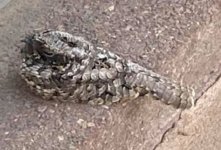Axel Braunlich
Member

Hi, this is a nightjar from Sept, from Denver (?). It was posted on a friend's website, saying it is a "Night Hawk". I'm pretty sure it isn't a Common Nighthawk, but since I have no experience with American Caprimulgiformes I'm a bit lost here. Looks like a Common Poorwill to me, with a much-too-long tail... Any ideas? Cheers, Axel









